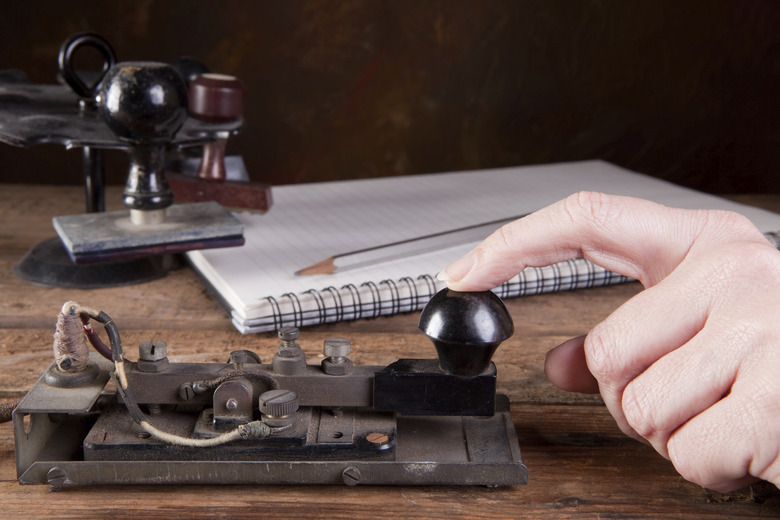Cons Of The Telegraph
Do you think you can survive without your cell phone? How about your computer? A little over a century ago, people had few options for long-distance communication. In 1843, Samuel Morse – inventor of the famous "Morse Code" – created the telegraph. It would lead the trend in electronic communication that grew into what we know and see today.
Required Morse Code
Required Morse Code
The telegraph was one of the most important inventions of the 19th century; however, it has several drawbacks compared to 21st-century devices. For example, telegraphs required a knowledge of Morse Code – their primary means of communication. Telegraphs sent a series of electrical signals via a telegraph wire. The signals could be heard by the operator on the opposite end of the wire as a series of long and short clicks. Morse Code represented letters of the alphabet with click patterns, which had to be memorized by the operator.
Slow Speed
Slow Speed
The first long telegraph-line extended all the way from Baltimore to Washington. Messages sent by telegraph took anywhere from a minute to a few minutes, depending on the message length and the operator's skill. Because each letter had to be converted into Morse Code and keyed by hand, telegraph transmission took much longer than electronic communication methods used today.
Message Length and Access
Message Length and Access
Due to the conversion time of a message, the length of telegraphs needed to be relatively short, making them useful only for very short and concise messages. Access to telegraphs was another issue. Some towns had them, and some didn't. Unlike the telephones that are commonplace today, telegraphs were rarely used outside of government, business and other large institutions.
Poor Quality Communication
Poor Quality Communication
A serious drawback of telegraph devices was that they lacked quality in communication, which is why when the telephone came about – invented by Alexander Graham Bell in 1876 – offering direct voice communication, it quickly took the communications crown from telegraphy, which was relegated to specialty uses. A telephone conversation carries all the subtlety and nuance of normal speech, which was absent in telegraph messages. Today's communication methods allow digital transfer of video, audio, as well as documents; other technologies, such as the fax machine, allow physical documents to be restructured on the receiving end – all of which the telegraph was incapable of doing.
Cite This Article
MLA
Johnson, Steve. "Cons Of The Telegraph" sciencing.com, https://www.sciencing.com/cons-telegraph-8246524/. 24 April 2017.
APA
Johnson, Steve. (2017, April 24). Cons Of The Telegraph. sciencing.com. Retrieved from https://www.sciencing.com/cons-telegraph-8246524/
Chicago
Johnson, Steve. Cons Of The Telegraph last modified March 24, 2022. https://www.sciencing.com/cons-telegraph-8246524/
